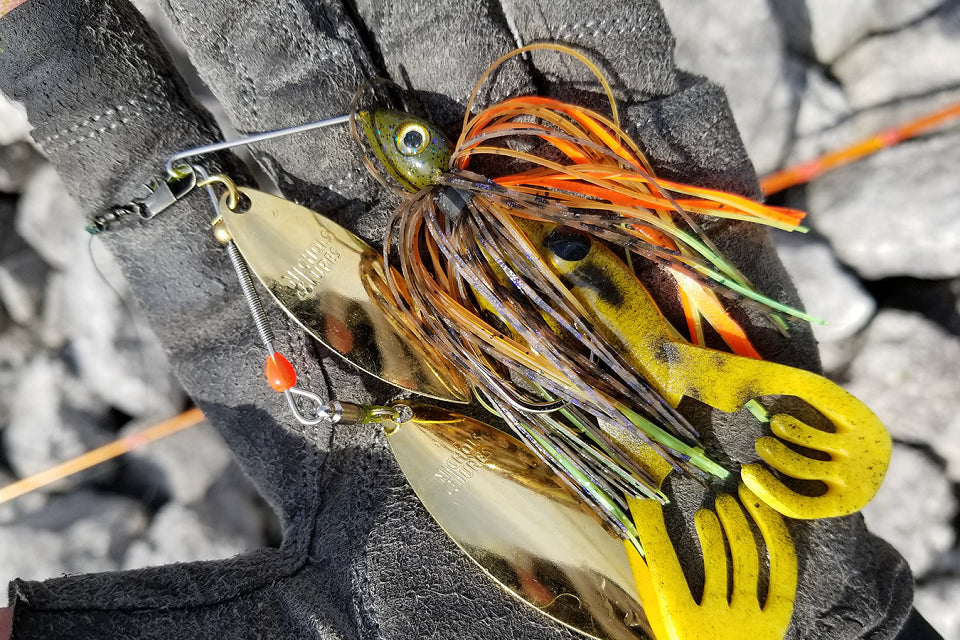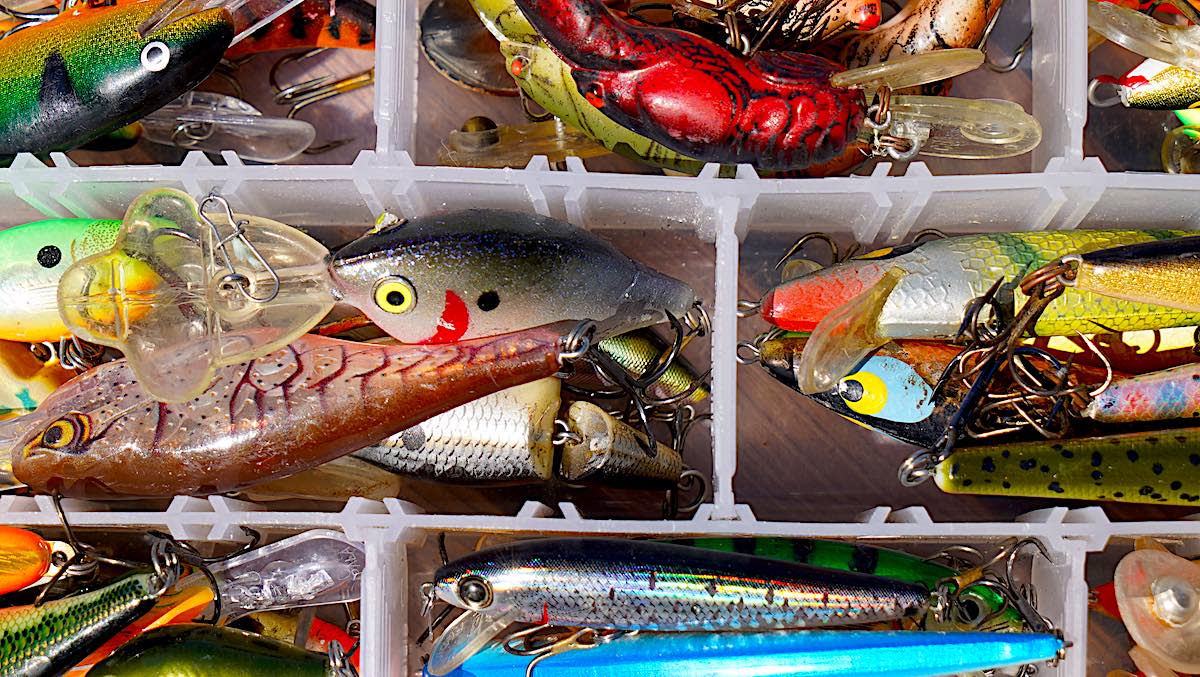8 Highly Effective Bass Fishing Lures for Early Morning and Dusk Fishing
Discover the very best Techniques for Selecting Bass Lures for Your Next Angling Journey
Picking the best bass Lures can considerably influence angling success. Fishermens should consider various factors, such as seasonal patterns and water quality. Recognizing bass behavior is vital (Bass Lures). Choosing Lures that simulate natural prey can result in better outcomes. Lots of are unsure concerning the best strategies to execute. What methods should one prioritize to boost their fishing experience? The responses hinge on checking out certain problems and adjusting as necessary
Understanding Bass Actions and Habitat
Understanding the nuances of bass actions and habitat is crucial for any kind of fishermen aiming to boost their fishing success. Bass are often discovered in numerous atmospheres, consisting of lakes, rivers, and storage tanks, where they look for structure such as immersed rocks, plant life, and fallen trees. Their actions is greatly affected by water temperature level, light levels, and available forage.
During warmer months, bass have a tendency to be more energetic, frequently occupying shallower waters, while in cooler months, they pull back to much deeper locations. In addition, bass exhibit patterns of feeding, commonly being a lot more hostile throughout dawn and sunset. They are opportunistic predators, exploiting smaller fish, bugs, and crustaceans. Recognizing these factors can assist fishermens determine prime fishing areas, in addition to the finest times to fish. Acknowledging bass behavior in connection with their habitat is crucial for effective angling, assisting fishermens in making educated decisions regarding where to cast their lines.
Matching Lures to Seasonal Issues
As fishermens adjust their techniques to changing seasons, matching Lures to seasonal conditions comes to be a crucial strategy for enhancing fishing success. In spring, when bass are emerging from winter months dormancy, anglers often utilize spinnerbaits and shallow-running crankbaits to mimic the motions of victim. Summer requires a change to topwater Lures or soft plastic worms, as bass seek color and cooler waters. Throughout the loss, when bass are fattening up prior to winter months, larger Lures that imitate baitfish can be reliable. Winter months requires a more refined approach; jigs and slow-moving finesse baits often generate better outcomes as bass become tired. Comprehending these seasonal patterns assists anglers select the ideal attractions, thus boosting their chances of a successful catch. By lining up appeal choices with the all-natural actions of bass throughout the year, anglers can maximize their angling experience and improve their total success on the water.
The Value of Color Option
Color option plays an important function in bass fishing, as it can substantially impact a fisher's success. Aspects such as water quality, seasonal modifications, and the details preferences of different bass species all affect which colors are most reliable. Recognizing these aspects allows anglers to make enlightened options that enhance their angling experience.
Water Clarity Considerations
When the water quality varies, picking the ideal bass appeal shade becomes crucial for bring in fish. In clear water, all-natural shades such as shad or bluegill patterns tend to be a lot more efficient, as they simulate the target bass are accustomed to seeing. Alternatively, in dirty or discolored water, brighter shades like chartreuse or fire tiger can boost visibility, making it much easier for bass to spot the appeal. The contrast in between the lure and the surrounding atmosphere plays a considerable role in angling success. Anglers need to also consider the time of day; lighter shades may work better in bright sunshine, while darker tones can be much more efficient throughout low-light conditions. Adjusting lure shade to water clarity optimizes the opportunities of an effective catch.
Seasonal Color Scheme
How do seasonal adjustments affect bass behavior and lure effectiveness? As temperature levels shift throughout the year, bass adjust their feeding routines and favored habitats, making shade selection important for successful angling. In springtime, when bass generate, intense colors like chartreuse can attract focus. Summertime frequently ask for even more all-natural tones, such as green pumpkin or shad patterns, as bass seek to assimilate with their surroundings. Throughout autumn, dynamic shades like orange and red resemble the transforming vegetation, luring bass as they prepare for winter months. In winter season, subdued tones such as gray or white might be much more effective, as bass come to be lethargic. Eventually, recognizing seasonal shade patterns makes it possible for anglers to choose Lures that reverberate with bass's current actions, boosting their opportunities of success.

Species-Specific Preferences
Comprehending species-specific preferences is vital for anglers aiming to maximize their appeal option. Different bass species, such as largemouth and smallmouth, exhibit special color preferences based upon their environment and feeding behaviors. Largemouth bass often choose darker hues, especially in murky waters, where colors like black and dark green resemble natural prey. In comparison, smallmouth bass are most likely to respond to brighter colors, such as chartreuse and orange, specifically in clear waters. Additionally, water clarity and light conditions can affect these preferences, making it essential for anglers to adapt their attraction shade appropriately. By thinking about these species-specific choices, anglers can raise their chances of an effective fishing expedition, inevitably improving their total experience on the water.
Picking the Right Entice Kind for Various Scenarios
Choosing the suitable appeal type for various angling scenarios is vital for success on the water. Anglers should think about factors such as water quality, climate condition, and the bass's feeding habits. For dirty water, darker-colored appeals, such as jigs or spinnerbaits, can be reliable, as they produce a strong shape. In clear water, natural-colored Lures like soft plastics or topwater lures might entice wary bass.
When angling in hefty cover, using weedless gears or heavy jigs can help navigate with challenges without snagging. On the other hand, open water scenarios may take advantage of crankbaits or swimbaits that can cover higher distances. Furthermore, throughout cooler months, slower-moving Lures tend to be more efficient, while warmer problems may ask for faster retrieves. By adapting appeal options to specific settings, anglers raise their chances of an effective catch.
Trying out With Size and Activity

Anglers commonly try out a variety of dimensions and actions to establish what jobs best under differing conditions. A sluggish, refined action could be suitable in chillier water, while a quickly, hostile retrieve might be more efficient in warmer temperature levels. By thoroughly observing the bass's reactions to these variants, useful reference fishermens can improve their strategy and boost their opportunities of an effective catch. Ultimately, the appropriate mix of dimension and activity can make a considerable distinction on the water.
Reading Water Problems for Better Draw Selections
Understanding water problems is essential for selecting the appropriate bass attraction. Variables such as water clearness and temperature can considerably influence fish actions and feeding patterns. By assessing these conditions, fishermens can make enlightened choices that boost their chances of an effective catch.
Evaluating Water Clarity
How does water quality influence the effectiveness of bass lures? Water clarity significantly influences bass behavior and the exposure of appeals. In clear water, bass tend to be extra mindful, making natural-colored Lures much more effective as they imitate prey closely. Anglers might choose lighter, subtler colors to stay clear of spooking fish. On the other hand, in dirty or discolored water, brighter and more dynamic colors stand out, attracting attention also in reduced visibility conditions. In addition, the kind of attraction can differ; slower-moving Lures could work much better in clear water, while faster, much more hostile presentations can attract bass in murkier environments. Comprehending the quality of the water permits anglers to select Lures that maximize their chances of success throughout their fishing trips.
Understanding Water Temperature Level
As water temperature varies, it straight affects bass actions and their feeding patterns, making it important for fishermens to take into consideration when choosing lures. Normally, bass favor warmer temperatures, typically in between 65 ° F and 75 ° F, where their metabolism is heightened, causing increased feeding activity. In cooler water, bass become sluggish and might like slower-moving attractions, such as jigs or soft plastics. Conversely, during warmer months, faster presentations like crankbaits or topwater Lures can be more efficient. Fishermens need to likewise think about seasonal changes; as an example, spring warming causes hostile feeding as bass prepare to generate. By understanding just how temperature influences bass, anglers can make educated decisions on lure choice, dramatically enhancing their opportunities of success.
Tips for Organizing and Preserving Your Lure Collection
While several anglers concentrate on picking the ideal Lures for their following fishing expedition, maintaining an appeal and arranging collection is just as essential for boosting efficiency and performance. A well-structured collection allows anglers to quickly situate the Lures they need, reducing time spent rummaging via deal with boxes.
To start, anglers should categorize Lures by kind-- crankbaits, jigs, or soft plastics-- making it easier to discover certain alternatives. Utilizing take on trays or boxes with adjustable compartments can assist keep every little thing organized. Labeling containers simplifies the process additionally, aiding quick identification.
Regular upkeep is also important; fishermens need to inspect Lures for continue reading this indications of wear, such as rusted hooks or harmed paint, and replace them as needed. Cleaning Lures after each trip stops deterioration and makes sure longevity. By applying these business and maintenance techniques, anglers can boost their angling experience and guarantee their Lures are always in optimal condition.
Regularly Asked Questions
What Are the most effective Brand Names for Bass Lures?
The ideal brand names for bass Lures include Rapala, Strike King, and Berkley. These brand names are renowned for their development, quality, and performance, interesting both beginner and experienced anglers looking for successful angling experiences.
Exactly How Lots of Lures Should I Handle a Journey?
A common fishing expedition ought to include around 5 to 10 appeals, permitting versatility while staying clear of mess. This selection ought to include various types and shades to adapt to changing conditions and fish choices.
Can I Make My Very Own Bass Lures?
Yes, people can make their own bass Lures making use of various materials and techniques - Best Bass Lures South Africa. Crafting Lures enables modification, making it possible for anglers to explore sizes, shapes, and colors to suit specific angling problems and choices
What's the Typical Life-span of a Bass Lure?
The ordinary lifespan of a bass appeal varies, commonly lasting from a couple of months to a number of years, relying on worldly top quality, use frequency, and environmental conditions. Appropriate treatment can dramatically prolong an appeal's use.
Exist Details Lures for Evening Angling?
Yes, there are specific Lures created for night fishing. Dark colors and Lures that produce vibrations, such as spinnerbaits or jigs, typically draw in bass in low-light conditions, enhancing presence and causing predatory impulses.
Conversely, in dirty or tarnished water, brighter colors like chartreuse or fire tiger can enhance exposure, making it simpler for bass to detect the appeal. Bigger Lures can draw in bigger bass, while smaller sized Lures might be more efficient for capturing smaller fish. Additionally, the type of attraction can differ; slower-moving Lures might work much better in clear water, while quicker, extra aggressive presentations can attract bass in murkier atmospheres. As water temperature level changes, it straight affects bass behavior and their feeding patterns, making it critical for fishermens to think about when selecting lures. While several fishermens focus on selecting the right Lures for their following angling trip, arranging and keeping a lure collection is just as vital for enhancing performance and performance.